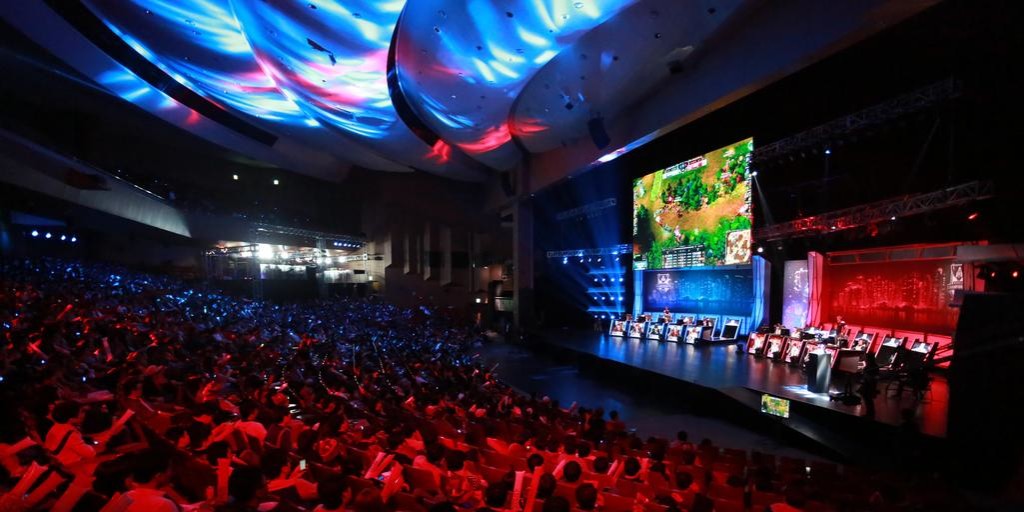PricewaterhouseCoopers (PwC) has taken a look at the growing eSports market with its latest consumer report, “The Burgeoning Evolution of eSports,” which breaks down the diverse gaming community, outlines the levels of consumer awareness of eSports, and analyzes the potential opportunities and challenges for industry growth.
PwC forecasts that the eSports industry will reach $463 million in 2016 with eSports viewership exceeding top traditional sporting events such as the MLB World Series and NBA Final. The report finds that the majority of current eSports consumers will either increase or maintain their level of involvement in the coming year, both in viewership (83 percent) and participation (72 percent).
Deborah Bothun, Entertainment, Media and Communications leader at PricewaterhouseCoopers, explains what this data means for sponsors, advertisers, and media companies in this exclusive interview.
 What impacts are the televised eSports events across ESPN, Turner and other networks having on generating awareness of eSports with mainstream audiences?
What impacts are the televised eSports events across ESPN, Turner and other networks having on generating awareness of eSports with mainstream audiences?
While we cannot comment on the specific network, the premiere of eSports on traditional television is a huge win for the competitive community and one that will help catapult its awareness. Regardless of its growing digital footprint, traditional television still provides tremendous reach, and one that’s especially necessary in the sports world.
What role do you see television playing for the eSports audience versus the traditional streaming audience?
It is undeniable that livestreaming has been instrumental for the growth of eSports. Yet, in some ways, it has helped build an audience of people who were predisposed to it, in that consumers intentionally went online to connect with other gamers or play anonymously. Television can help broaden the eSports audience and reach consumers who either do not even know they are fans yet or want to learn about the industry.
What opportunities does eSports open up to marketers and brands today?
ESports is only getting bigger, and with such growth comes investment opportunities for brands and marketers who hope to capitalize on the success. One does not have to be a gaming company to get in on the action. Viewers can be reached beyond traditional advertising and sponsorships such as merchandising, mobile apps that provide data such as scores and stats, or fantasy betting. Other examples to start with include branded uniforms, branded hydration, and branded transportation.
How is eSports viewing impacting the time consumers spend playing games and watching other entertainment?
We see consumers, especially men, heavily invested in game strategy. Much of the time, they are watching eSports from a competitive lens in that they not only enjoy watching their favorite games being played at the highest level, but they also watch competitions to improve their own skills. So while we cannot say for certain, it is feasible that eSports viewing only makes a player want to play more.
How does the amount of females interested in eSports compare to the traditional female gaming audience?
From a player perspective, the number of women in the traditional gaming space isn’t yet matched in the professional scene. This could be the result of less female interest than men, or many other factors.
What impact do you see this female eSports audience having on the potential for female pro gamers?
As the female eSports audience continues to grow, so too will the number of female players. Overall treatment of females in the gaming community has become a noteworthy topic that is being discussed, and we have heard discussion of all-female tournaments, for example.
How diverse is the eSports audience racially?
Diversity is a big priority for the eSports community as a whole. Our survey indicates that the eSports audience is racially diverse, skewing slightly towards Asians and Hispanics. However, it is important to note that the online world has given players anonymity, so as live events become more popular, it will be interesting to see if the diverse online nature of the game transfers over to in-person, where the community is less diverse.
There are now eSports tournaments going on every week. What are consumers looking for in terms of game genres? And what role do big prize pools play in attracting audiences?
ESports fandom and loyalty are heavily tied to the content itself, unlike traditional sports where fans tend to follow specific teams or players. Content is tremendously important when trying to build an eSports audience. Our survey indicates that first-person shooter games are the number one watched genre in eSports among viewers, regardless of age, gender or type of gamer. Our survey also indicates that prize pools don’t play a large role in attracting an audience—location, games played and price are most important (in that order).
What role do you see virtual reality playing in eSports moving forward, and in how consumers watch events?
We see tremendous potential for the convergence of virtual reality (VR) and eSports. Though mainstream adoption is still a ways off, investors are starting to see opportunities for this space such as cloud gaming using VR as a way for the audience member to see alternative plays or scenarios. Also, VR will allow for content creation continuously making games that look more realistic so that players can fully immerse themselves.

